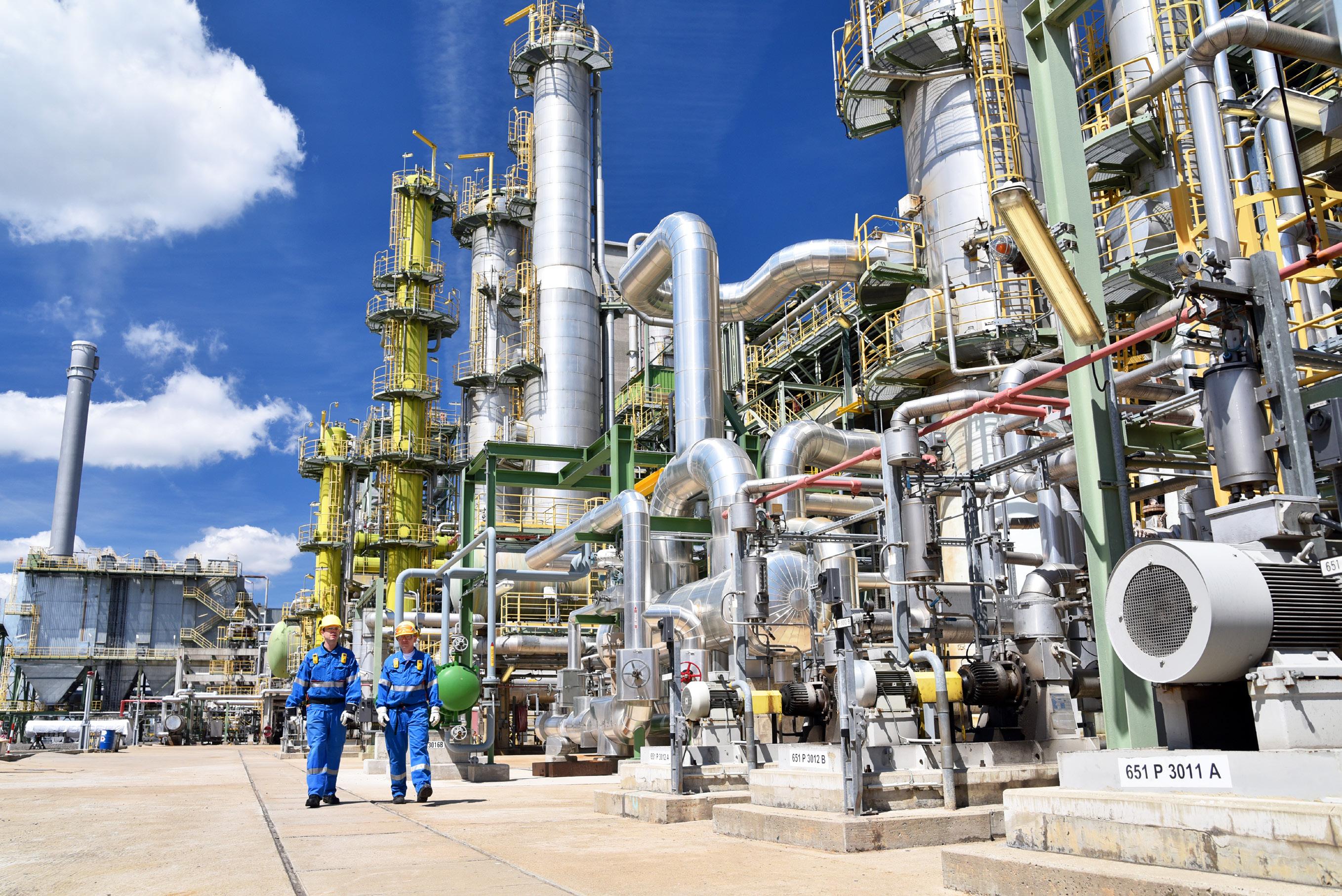
9 minute read
MILIND S. PATKE
need tight Capex management to ensure on-budget and on-time completion of projects. Given high complexity, project management can be complicated with more than 61 per cent of the projects ending up above budget and approximately 40 per cent ending up behind schedule. A robust Capex management approach, with a strong focus on value generation and assurance, can result in a 4 to 6 per cent reduction in Capex cost and drive value via ontime completion.
Strengthen M&A and partnership ca-
Advertisement
pabilities: Strategic partnerships will be one of the winning themes for petrochemical businesses in India. M&A activity among complementary players can help create world-scale businesses that are greater than the sum of their parts. As incumbents and new entrants prepare their India partnership road map, we believe there are three key success factors. First, identify the growth objectives and identify internal and external capabilities required to achieve them. Second, on an ongoing basis, scout for potential partners that can support the growth ambition. Finally, set up a strong in-house team with robust M&A experience in deals of the projected size.
Embed sustainability into ways of
working: Sustainability is bound to be high on the agenda for petrochemical manufacturers going forward. Forwardthinking companies will be stewards of sustainability and avoid business disruptions, such as a sudden demand decline because of a plastic ban. Four moves will be essential to building a sustainability value pillar: * Develop a clear strategy, carefully considering where to play and how to win. * Be willing to experiment to fine-tune and arrive at the right value chain play. * Scout for partnerships rather than reinventing the wheel. * Build a sector consortium to engage in positive public relations among key stakeholders.
The growth story continues
India’s petrochemicals market has enjoyed strong momentum over the past few years, and we expect the growth story to continue. However, with growing domestic and global supply, increasing trade uncertainties, and a growing regulatory focus on sustainability and the circular economy, several disruptions could alter the petrochemical landscape. In this context, incumbents, as well as new entrants, will need to carefully assess their options and build a highly differentiated “Made for India” strategy to capitalize on the attractive opportunities and to overcome the unique challenges posed by the Indian market.

EXECUTIVE DIRECTOR – BIOFUELS, BHARAT PETROLEUM CORPORATION LIMITED (BPCL)
USE OF ETHANOL IN FUEL BLENDING
higher Research Octane Number of 108.5 which helps in improved engine power and performance. It also helps in significantly reducing other pollutants (carbon monoxide, sulphur oxides, nitrogen oxides, hydrocarbon and particulate matter) in vehicle exhaust when compared with fossil fuels.
Ethanol has a lower calorific value of around 6,400 Kcal/Kg as compared to normal petrol (around 10,000 Kcal/ Kg) which results in lower mileage per unit of fuel i.e. higher fuel consumption for a given distance. The issue can be resolved by suitable modification in the engine and tuning the engine for better mileage.
Lifecycle Analysis (LCA) of Ethanol produced using feedstocks derived from agriculture route indicates a significant reduction in Green House Gas (GHG) emission as compared to conventional fossil fuels.
Ethanol Blended Petrol: India perspective
Globally, one of the most commonly used biofuels is ethanol. This is mainly produced from agricultural feedstock such as sugarcane molasses/juice, corn, damaged/surplus food grain etc. India is the 2nd largest global producer of sugarcane and hence there is significant potential to use domestically produced ethanol for driving biofuel usage in the country. Increasing usage of ethanol produced from domestically grown sugarcane can help India reduce its dependence on the import of crude oil. Additionally, ethanol production can help increase the total revenues for sugar mills and in turn for the farmers. This can help alleviate to an extent the current financial problems of the sugar industry that is faced with low sugar prices on account of adverse demand and supply situation.
After the success of pilot projects to
India, one of the fastest-growing economies, is heavily dependent on the import of crude oil to fuel its growth. Post-industrial revolution, fossil fuels have been the primary sources of energy in the transportation sector. As a cleaner alternative energy source to manage carbon imbalance in the environment, Biofuels have increasingly become indispensable for sustainable development towards Atmanirbhar Bharat with significant socio-economic benefits, while meeting growing en500Cr ergy needs. “Total installed capacity for India’s National Policy on ethanol production is around Biofuel - 2018 aims to tackle 500 crore litres wherein 80 – these twin challenges of emis- 85 per cent is from the sugar sion and import reduction by en- industry and 15 – 20 per cent couraging increased use of biofuels is from grains” in the energy and transportation sector.
The policy has given indicative targets to achieve 20 per cent ethanol blending in petrol and 5 per cent biodiesel blending in diesel by 2030.
Ethanol as a Fuel
Ethanol is a better blend component for petrol due to the
Niti Aayog MoEFACC (Policy)
ISMA MoCA, F&PD MoA&FW
State Govt. Excise Dept. SPCB
R&D by Central & State Govt. Institutes
Farmers Sugar Mill Molasses Based Distillery Ethanol Production MoP&NG, MoN&RE
MoRT&H
OMCs for Blending in Petrol
Grain Miller, FCI Grain Based Distillery
Technology Provider, R&D CO2 DDGS
Ethanol for IMFL & Chemical Industry R&D SLAM
Auto Industry R&D
EBP to Retail Customer E10, 20,....E100
study the feasibility of ethanol blending in Petrol from 2001 to 2003, India formulated the Ethanol Blended Petrol (EBP) programme in 2003 signifying a shift towards a sustainable biofuelbased economy by allowing 5 per cent ethanol blending in 9 states and 4 union territories, which was extended to 20 states and 4 union territories in 2006. In 2009, National Biofuels Policy was
released. From 2010 to 2016 various measures related to Ethanol pricing and transportation were taken, which resulted in an increased percentage of Ethanol in Petrol. As per the National Policy on Biofuels - 2018, the EBP programme aims to achieve a blending ratio of 10 per cent ethanol with petrol by 2021-22 and 20 per cent by 2030, which is likely to be preponed to 2025.
Ethanol blending percentage has increased from 1.5 per cent in ethanol supply year 2013-14 (ESY - December to November) to 5 per cent in ESY 2019-20 (170.5 crore litres) and 6.94 per cent for present ESY 2020-21 (as on 1st March 2021).
Ecosystem for First Generation (1G) Bio-Ethanol production from feedstocks to final consumption points is depicted through block diagram.
All the stakeholders like various ministry and department from the Government of India (GoI), state government and their concerned departments, ethanol producers/sugar industry, Oil Marketing Companies (OMCs), automobile industry, associated Research institutes and respective industry associations are working in a coordinated manner to continuously improve blending percentage of ethanol in Petrol.
Challenges in achieving targets set under the EBP Programme
The majority of the ethanol production capacity is concentrated in the states of Maharashtra, Uttar Pradesh and Karnataka. As per BIS specifications, the maximum allowed ethanol blending percentage in Petrol is 10 per cent.

Hence to meet the 10per cent blending requirement nationally, the interstate movement of ethanol is being carried out, based on state-wise demand and supply scenario.
Fuel Grade Ethanol availability for ESY2020-21 is expected to be 325 crore litres (283 crore litres from the sugar industry and 32 crore litres will be grain-based). Based on the interstate movement, state-wise expected ethanol blending percentage is depicted in the adjacent figure.
Another major concern in achieving ethanol blending target is limited production capacity for fuel grade ethanol. Total installed capacity for ethanol production is around 500 crore litres, where in 80 to 85 per cent is from the sugar industry and 15 to 20 per cent is from grains. Almost 90 per cent of ethanol procured for blending in petrol is produced using sugar molasses/sugar juice and around 10 per cent is produced from damaged food grains not suitable for human consumption.
Ethanol requirement to meet 10 per cent EBP target for ESY 2021-22 is estimated at 412 crore litres. While ethanol availability is expected to be 360 crore litres (based on available information as of date). State-wise details of projected ethanol availability and the requirement for ESY 2021-22 and expected ethanol blending percentage after considering interstate movement are indicated in the following figure. Notes: 1. Assam region includes Assam, Arunachal Pradesh, Manipur, Mizoram and Nagaland. 2. West Bengal region includes West Bengal, Meghalaya, Sikkim and Tripura. 3. The Punjab region includes Punjab and Chandigarh. 4. Gujarat region includes Gujarat, Daman & Diu and Dadra & Nagar Haveli. 5. Tamil Nadu region includes Tamil Nadu, Puducherry and Andaman & Nicobar.
To bridge the shortfall of ethanol for fuel blending, various measures are being taken up to increase the production capacity within the country and it is expected that we will be able to achieve the target of 10 per cent ethanol blending in petrol for ESY 2021-22.
There has been surplus production of sugar in the country during the previous decade (except in ESY 2016-17 due to drought) and the trend is likely to continue in coming years. In the normal ESY about 32 Million Metric Tonnes (MMT) of sugar is produced, against a domestic consumption of about 26 MMT. This surplus sugar of 6 MMT, which is being exported currently, will have to be diverted to produce 360 crore litres of ethanol post-December 2023 when the government is slated to withdraw export subsidy. Hence, the government of India has announced various measures to increase the distillation capacity for fuel-grade ethanol. The government is also encouraging the conversion of damaged/surplus grain available in the country to ethanol. These measures will serve various socio-economic and environment-related causes like higher income for farmers, better realization for the sugar industry, meeting EBP programme targets, employment generation. It will also help lower the country’s energy import dependency resulting in a reduced crude oil import bill and strengthen the country’s resolve towards fulfilling commitments made at COP-21, the UN Climate Change Conference held in France in 2015.
Apart from limited production capacity for fuel-grade ethanol, another major challenge in achieving 20 per cent and higher EBP target is the compatibility of vehicles (internal combustion engines and fuel handling system). At present, transport vehicle systems can handle 10 per cent ethanol-blended petrol. Further increasing ethanol percentage in petrol will require modification in engines and fuel handling systems. To resolve the concern, the automobile industry is working towards Flex Fuel Vehicle (FFV) and hybrid vehicles.
The government is also encouraging the use of E100 (100 per cent Ethanol) on an experimental basis and it is expected that after TVS, two-wheeler manufacturers may also launch models running exclusively on E100.
Another challenge for OMCs is to make E10 and E20 available simultaneously at the retail outlets during the transition phase as current models which are compatible with E0 and E10 may not be compatible with E20.
As a cleaner alternative energy source, biofuels are the way forwards for Sustainable Development towards Atmanirbhar Bharat and Net-Zero Carbon Economy with significant socioeconomic benefits to meet the growing energy needs of the nation.











